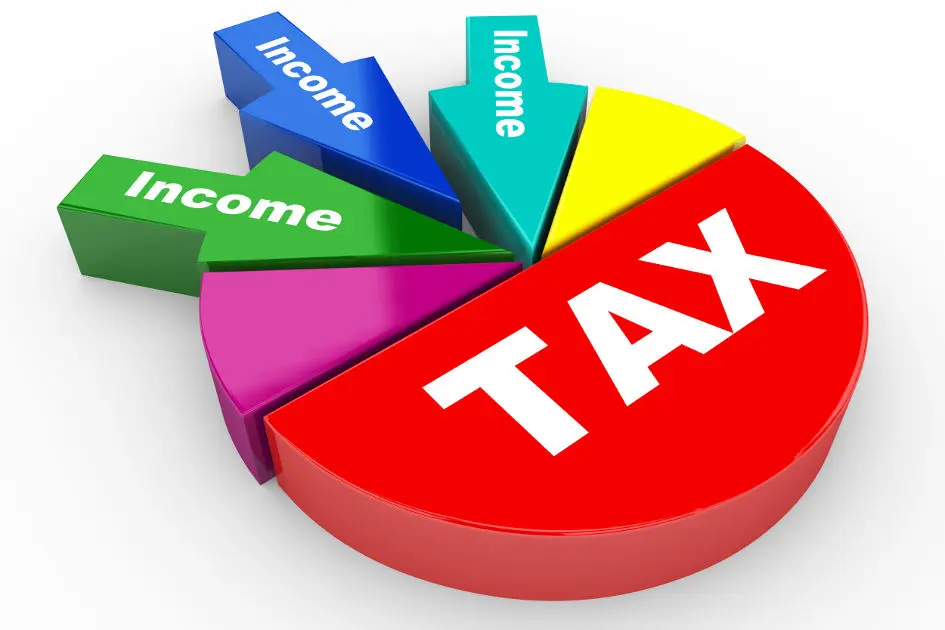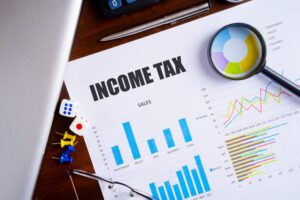Taxes in Pakistan are a complicated variety of over 70 taxes payable to 37 different agencies of the Government of Pakistan. As the range of taxes increases and we move towards becoming a tax-paying nation we all must develop a basic awareness of taxes and how they are levied on our income.
Key Terms to Understand
Let us begin by revisiting a few basic definitions:
Taxable Income
This is the Total Income minus exemptions and any donations that are eligible for deduction from taxation and deductible allowances.
Exemptions:
Exemptions are income heads that are tax-free, therefore “exempt” from taxes.
Total Income
Total Income is the total of all income that is subject to Taxes under each head of Income.
Head of Income
Under the Income Tax Ordinance, 2001, Income is classified into the following five heads of Income:
- Salary
- Income from property
- Income from business
- Capital gains
- Income from Other Sources
Resident
A taxpayer is considered a resident (and therefore has to pay taxes) under the following conditions:
- S/he has been living in Pakistan for a period or periods that add up to at least one hundred and eighty-three days (183 days) or more in the tax year;
- If a person individual is in Pakistan for a period or periods that add up to one hundred and twenty days (120) or more in the tax year AND, in the four years before the current tax year, has been in Pakistan for a period or periods that add up to three hundred and sixty-five days or more;
- Is an employee or official of the Federal Government or a Provincial Government posted abroad in the Tax Year?
- An Association of Persons is Resident for a Tax Year if the control and management of its affairs was wholly or partly in Pakistan for any time in that year;
- A Company is treated as a Resident for a Tax Year if :
- It is incorporated or formed under any law in force in Pakistan;
- The control and management of its affairs is wholly in Pakistan for any time in the year; or
- It is a Provincial Government or a local government in Pakistan.
Non-Resident
An Association of Persons, a Company, or an Individual is considered Non-Resident for a Tax Year if they are not Resident for that year. (see requirements for Residents above)
Pakistan Source Income
Source incomes are defined in section 101 of the Income Tax Ordinance, 2001. This divides Incomes under varied heads and situations. Some of the common source Incomes are:
- Salary received or receivable from any employment in Pakistan. It doesn’t matter where it is paid.
- Salary paid by, or on behalf of, the Federal Government, a Provincial Government, or a local Government in Pakistan, regardless of where the employment (job) is
- Dividend paid by Pakistan Resident Company.
- Profit on debt paid by a Pakistani Resident Person
- Property or rental Income from the lease of immovable property in Pakistan.
- Pension or annuity paid or payable by a Resident or permanent establishment of a Non-Resident.
Foreign Source Income
Any income which is not a Pakistan source income.
Person
- Any Individual
- A Company or Association of Persons incorporated, formed, organized, or established in Pakistan or elsewhere;
- The Federal Government, a foreign government, a political subdivision of a foreign government, or public international organization
Company
- A Company is defined under the Companies Ordinance, 1984 (XLVII of 1984).
- A ‘body corporate’ formed under any law in force in Pakistan.
- A modaraba.
- A body incorporated by or under the law of a country outside Pakistan relating to the incorporation of Companies;
- An amendment has been made through the Finance Act, 2013 to enlarge the scope of the definition of a Company. Now as per Income Tax Ordinance, 2001 a company includes:
- A co-operative society, a finance society, or any other society;
- A non-profit organization;
- A trust, an entity, or a body of persons established or constituted by or under any law for the time being in force.
- A foreign association, which the Board has, by general or special order, declared to be a company for this Ordinance.
- A Provincial Government.
- A Local Government in Pakistan.
- A Small Company.
Association Of Persons
- Includes a firm (the relation between persons who have agreed to share the profits of a business carried on by all or any of them acting for all).
- A Hindu undivided family
- Any artificial juridical person
- Any body of persons formed under a foreign law but does not include a Company.
Tax Year
- These twelve months that ends on the 30th day of June i.e. on the financial year
- It is mentioned by the calendar year in which the date falls. For example, the tax year for the period of twelve months from July 01, 2017, to June 30, 2018, will be mentioned as the calendar year 2018 and the period of twelve months from July 01, 2018, to June 30, 2019, shall be denoted by the calendar year 2019.
Special Tax Year
This means any period of twelve months and is denoted by the calendar year relevant to the Normal Tax Year in which the closing date of the Special Tax Year falls. For example, the Tax Year for the period of twelve months from January 01, 2017, to December 31, 2017, shall be denoted by the calendar year 2018 and the period of twelve months from October 01, 2017, to September 30, 2018, shall be denoted by the calendar year 2019.
How to Register for Taxes
Any person, a company, or an association of persons (AOP), or foreign national is treated as registered when they are re-enrolled on the Iris portal. The enrollment provides you with a National Tax Number (NTN) or Registration Number and password.
- In the case of individuals, 13 digits Computerized National Identity Card (CNIC) will be used as NTN or Registration Number.
- NTN or Registration Number for AOP and Company is the 7 digits NTN received after e-enrollment.
Both these credentials allow users to access the Iris portal, the online Income Tax system. This is the only way through which online Income Tax Returns can be filed.
Documents needed for e-enrollment for an individual are as follows:
- CNIC/NICOP/Passport number
- Cell phone number in use
- Active e-mail address
- Nationality
- Residential address
- Accounting period
In case you are paying tax on business income you will also need:
- Business name
- Business address
- Principal business activity
- Name and NTN of the employer in case of salary income
- Address of property in case of property income
The principal officer of the company and AOP needs to ensure that the following information is available before starting e-enrollment
- Name of company or AOP
- Business name
- Business address
- Accounting period
- Business phone number
- E-mail address
- Cell phone number of the principal officer of the company or AOP
- Principal business activity
- Address of industrial establishment or principal place of business
- Company type, like public limited, private limited, unit trust, trust, NGO, society, small company, modaraba, or any other
- Date of registration
- Incorporation certificate by Securities and Exchange Commission of Pakistan (SECP) in case of a company
- Registration certificate and partnership deed in case of a registered firm
- Partnership deed in case firm is not registered
- Trust deed in case of a trust
- Registration certificate in case of society
- Name of the representative with his CNIC or NTN
- Following particulars of every director and major shareholder having 10% or more shares in case of company or partners in case of an AOP, namely:-
- Name
- CNIC/NTN/Passport and
- Share %
Income tax rates for Individual and AOP
The Income-tax rates of tax applied on the taxable income of every individual and AOP are in the following table:
| Income Brackets | Rates |
| Taxable income not exceeding Rs. 400,000 | NIL |
| Taxable income exceeding Rs. 400,000 but not exceeding Rs. 600,000 | 5% of the amount exceeding Rs. 400,000 |
| Taxable income exceeding Rs. 600,000 but not exceeding Rs. 1,200,000 | Rs. 10,000 + 10% of the amount exceeding Rs. 600,000 |
| Taxable income exceeding Rs. 1,200,000 exceeding Rs. 2,400,000 | Rs. 70,000 + 15% of the amount exceeding Rs. 1,200,000 |
| Taxable income exceeding Rs. 2,400,000 exceeding Rs. 3,000,000 | Rs. 250,000 + 20% of the amount exceeding Rs. 2,400,000 |
| Taxable income exceeding Rs. 3,000,000 exceeding Rs. 4,000,000 | Rs. 370,000 + 25% of the amount exceeding Rs. 3,000,000 |
| Taxable income exceeding Rs. 4,000,000 exceeding Rs. 6,000,000 | Rs. 620,000 + 30% of the amount exceeding Rs. 4,000,000 |
| Taxable income exceeding Rs. 6,000,000 | Rs. 1,220,000 + 35% of the amount exceeding Rs. 6,000,000 |
Rate of Tax for Salaried Individual
| Income Brackets | Rates |
| Taxable income not exceeding Rs. 600,000 | NIL |
| Taxable income exceeding Rs. 600,000 but not exceeding Rs. 1,200,000 | 5% of the amount exceeding Rs. 600,000 |
| Taxable income exceeding Rs. 1,200,000 but not exceeding Rs. 1,800,000 | Rs. 30,000 + 10% of the amount exceeding Rs. 1,200,000 |
| Taxable income exceeding Rs. 1,800,000 but not exceeding Rs. 2,500,000 | Rs. 90,000 + 15% of the amount exceeding Rs.1,800,000 |
| Taxable income exceeding Rs. 2,500,000 but not exceeding Rs. 3,500,000 | Rs. 195,000 + 17.5% of the amount exceeding Rs. 2,500,000 |
| Taxable income exceeding Rs. 3,500,000 but not exceeding Rs. 5,000,000 | Rs. 370,000 + 20% of the amount exceeding Rs. 3,500,000 |
| Taxable income exceeding Rs. 5,000,000 but not exceeding Rs. 8,000,000 | Rs. 670,000 + 22.5% of the amount exceeding Rs. 5,000,000 |
| Taxable income exceeding Rs. 8,000,000 but not exceeding Rs. 12,000,000 | Rs. 1,345,000 + 25% of the amount exceeding Rs. 8,000,000 |
| Taxable income exceeding Rs. 12,000,000 but not exceeding Rs. 30,000,000 | Rs. 2,345,000 + 27.5% of the amount exceeding Rs. 12,000,000 |
| Taxable income exceeding Rs. 30,000,000 but not exceeding Rs 50,000,000 | Rs. 7,295,000 + 30% of the amount exceeding Rs. 30,000,000 |
| Taxable income exceeding Rs. 50,000,000 but not exceeding Rs. 75,000,000 | Rs. 13,295,000 + 32.5% of the amount exceeding Rs. 50,000,000 |
| Taxable income exceeding Rs. 75,000,000 | Rs. 21,420,000 + 35% of the amount exceeding Rs. 75,000,000 |
You know your taxable income from the tables above and you deduct the deductable allowances from the income figure.
| Sec | Particulars | Benefit | Limit |
| 60 | Zakat | Deductible Allowance | N/A |
| 60A | Workers’ Welfare Fund | Deductible Allowance | N/A |
| 60B | Workers’ Participation Fund | Deductible Allowance | N/A |
| 60C | Profit on Deb | Deductible Allowance | N/A |
| 60D | Education Expenses | Deductible Allowance (Subject to the maximum taxable income of an individual for claiming deductible allowance is Rs. 1,500,000) | Lower of:-5% of the total tuition fee paid by the individual – 25% of the person’s taxable income for the year; and – An amount computed by multiplying Rs. 60,000 with the number of children of the Individual. |
| 62 | Investment in Shares and Insurance | Tax Credit (A resident person other than a company) | Tax Credit: |
| (A/B)*C | |||
| A= Assessed amount of tax for the year before any tax credit.B= Taxable income for the year. C= Lower of: a) Cost of acquisition of shares / insurance premium or contribution paid or c) Rs.2,000,000 |
|||
| 62A | Investment in Health Insurance | Tax Credit | Tax Credit: |
| (A/B)*C | |||
| A= Assessed amount of tax for the year. | |||
| B= Taxable income for the year.C= Lower of: | |||
| a) The total contribution or premium paid or | |||
| b) 5% of the person’s taxable income or | |||
| c) Rs. 150,000 |
Confused? See the example below:
| Monthly | Annual | ||
| Income | 50,000 | 600,000 | |
| Benefits | 5,000 | 60,000 | |
| Less Deductibles | |||
| Zakat | (5,000) | (60,000) | |
| Medical Allowance | (5,000) | (60,000) | |
| Insurance Premium | (4,000) | (48,000) | |
| Taxable Income | 41,000 | 492,000 | |
In case this example is of a salaried individual, there would be no tax due as their taxable income slabs start from an annual income of Rs. 600,000. In the case of self-employed or AOPs the tax would be applied as below:
| Tax for AOP and others | |||
| Tax on | 400,000 | Nil | |
| Tax on | 92,000 | @5% | 4600 |
| Total Tax Payable | 4,600 | ||
The tax slabs are simple to apply to your taxable income. The most common exemptions and deductions are also listed in the tables above.
Apply the exemptions and deductibles that apply in your case to get your taxable income and apply tax rates according to the slabs you get. Maintain an excel sheet of your income annually to keep track of tax increases (and how pay raises and bonuses affect your tax returns).

Sadia Zaheer holds a Masters in Business Administration from IBA, Karachi. After working in several financial institutions in Client Management, Corporate Lending, Islamic Banking and Product Management she jumped careers to pursue a career in writing.
She is a Finance, Business and HR Development writer with four years of experience. She reads a lot and takes care of her multiple cats to remain calm.




